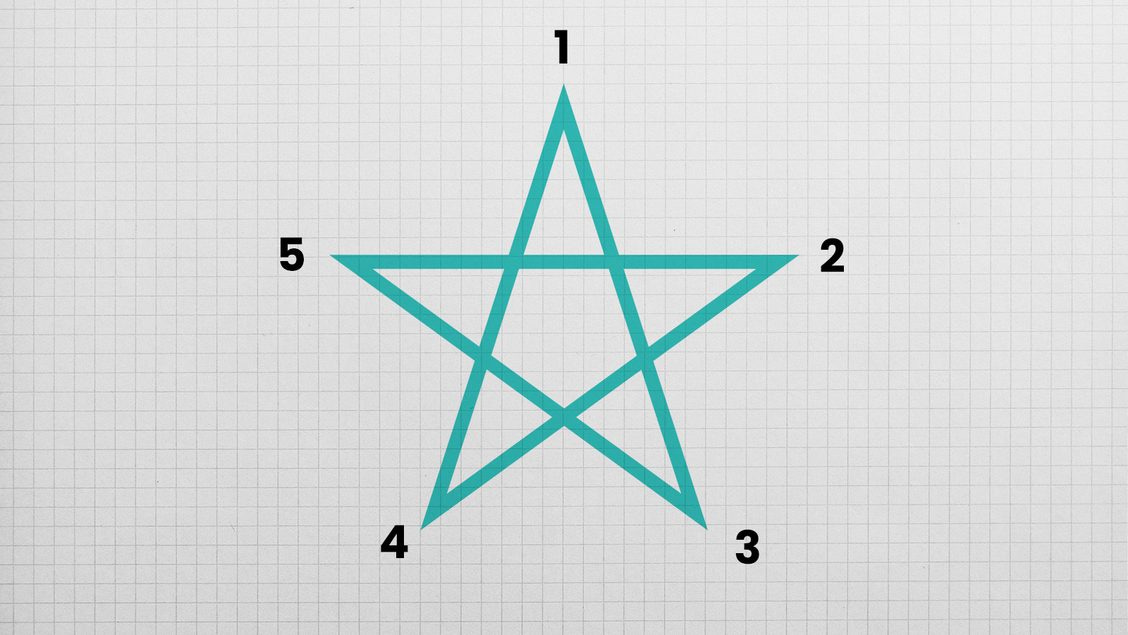What Your "Star Code" Says About Creativity
A fun induction set/brain break activity for students
Hello everyone, and welcome to the latest post on How to be a Teacher. Allow me to introduce a new guest post, written by the insightful .
Creativity is something education systems both sides of the Atlantic struggle to make the most of and it is not easy to let the creative minds flourish in modern classrooms.
Luckily, Mike is here to show you how to make classrooms the creative hubs they should be. Please, once you’ve read this post, visit his page if you’re an educator. You’ll find a whole heap of things you can do literally tomorrow to help creativity flow.
Here’s something you maybe never considered: not everyone draws a star like you.
What do you mean?
Examine the diagram below and consider the sequence in which you draw a star. That’s your star code: I’m a 5, 2, 4, 1, 3, 5.
Maybe you go counter clockwise and you’re a 3, 1, 4, 2, 5, 3. A colleague of mine blew my mind when he revealed he was a 1, 4, 1, 3, 5, 2, 4. I didn't even realize that was a possibility.
So what?
Besides being a fun little ice breaker, this phenomenon illustrates something interesting about creativity: the process that leads to creative output is generally unique to the creator—even for something as simple as drawing a five pointed star.
Just as your star code reflects a unique sequence, the creative process for any project is deeply personal. As the complexity of your output increases, so too does the individuality of the journey to get there.
The bigger lesson
As a classroom teacher, I try to instill in my students this meta lesson any time we create something new. I teach business, technology, and design, but this is equally applicable in a writing class, or any other subject where students engage in creative thinking.
My personal methods represent only one of a near infinite number of possibilities. The goal I set for my students is not to emulate me precisely, but to understand why I do what I do, borrow for themselves what makes sense to them, and modify it to make it their own.
It’s equally valuable to let students showcase their processes to peers.
This idea isn’t just for teachers. In any collaborative setting, understanding and appreciating a diversity of approaches can lead to more impactful results.
How I implement this in classroom
After welcoming my students, reviewing the primary objective for the day’s lesson, and going over the agenda, I:
Display the diagram on the board
Instruct students to find their star code and write it down on a piece of paper
Get students out of their seat, partner up, and share their results
Switch partners five times
Return students to their seats and ask them to write down on that same piece of paper, what they think this activity says about the creative process
Ask students to share their response with a neighbor
Lead discussion accordingly
The cool part is that students usually find their way to my conclusions independently during discussion. If it’s still first period though, and my students are still half asleep, I’ll conclude the activity by sharing my observations previously outlined above.
Takeaway: in a world often obsessed with outcomes, it’s important to pay attention to the inputs that led there. The next time you tackle a creative project, take a moment to reflect on your process—and invite others to share theirs. You might be surprised by what you learn.
More from
:This post has some powerful stories on looking at the world differently and making it a better place as a result:
Michael also pens bitesize tips in his ‘Two for Tuesdays’ segments, which I thoroughly recommend for their conciseness and insightful outlooks:
Know another educator or creator who might relish this fine piece of work? Click share below.










Thank you so much for sharing your platform with me. Take care!
Excellent activity, especially the takeaway.